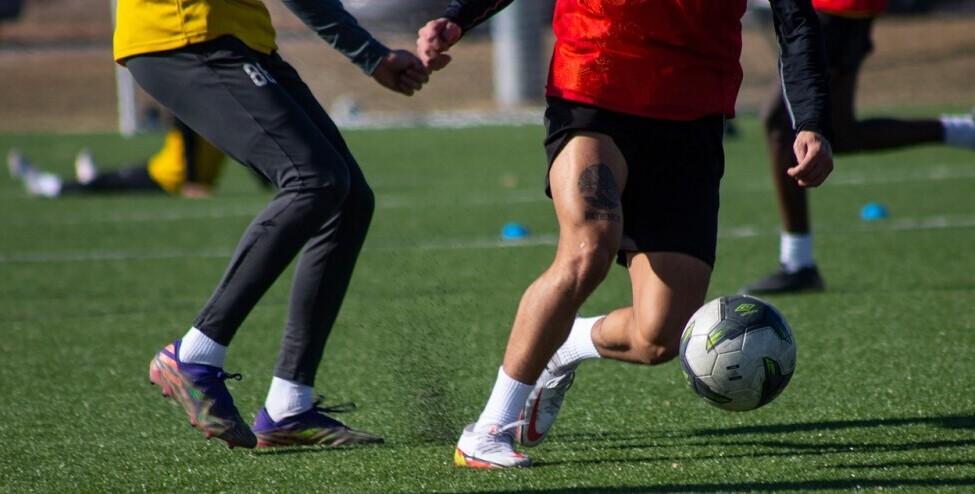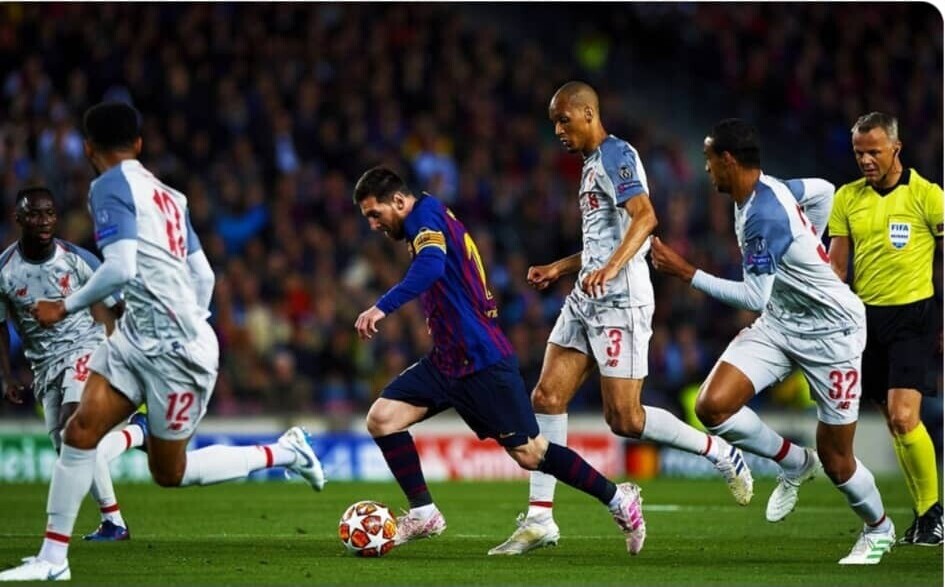Soccer dribbling drills in small spaces are essential for developing close ball control, agility, and quick decision-making.
These drills help players improve their ability to maneuver the ball in tight areas, which is crucial for maintaining possession and creating opportunities during a game.
In this article, we’ll explore various effective dribbling drills designed for small spaces, their benefits, and tips for maximizing their effectiveness.
1. The Importance of Small Space Drills
a. Enhancing Ball Control
i)Precision and Confidence: Dribbling in small spaces requires precise ball control, which helps players become more confident in handling the ball under pressure. This precision translates to better control during matches.
ii) Reducing Mistakes: Practicing in confined areas forces players to focus on their technique, reducing the likelihood of mistakes when facing defenders.
b. Improving Agility and Speed
i) Quick Movements: Small space drills require rapid changes in direction and speed, improving players’ agility and quickness. These skills are vital for evading opponents and making fast decisions on the field.
ii)Reaction Time: Training in small spaces enhances players’ reaction times, enabling them to respond swiftly to dynamic game situations.
2. Effective Dribbling Drills for Small Spaces
a. Cone Dribbling
i)Setup: Place cones in a tight zigzag pattern, with each cone spaced about 1 to 2 meters apart.
ii)Execution: Dribble the ball through the cones using quick, controlled touches. Focus on maintaining close control and sharp turns around each cone.
iii)Variations: Increase the difficulty by narrowing the cone spacing, using different parts of the foot (inside, outside), or dribbling with your weaker foot.
b. Square Dribbling
i)Setup: Mark out a square area (3×3 meters) with cones or markers.
ii)Execution: Dribble the ball around the perimeter of the square, making sharp turns at each corner. Incorporate sudden stops, starts, and changes in direction.
iii)Variations: Add a defender to apply pressure, forcing players to perform quick, evasive maneuvers within the square.
c. Shadow Dribbling
i)Setup: Partner up with another player. One player (the leader) dribbles within a small area while the other player (the shadow) follows closely without touching the ball.
ii)Execution: The leader performs various dribbling moves (e.g., feints, turns) while the shadow mirrors their movements. Focus on maintaining close control and adapting to the leader’s changes.
iii)Variations: Switch roles after a set period or introduce different dribbling patterns to challenge both players.
d. Wall Passes with Dribbling
i)Setup: Find a wall or create a makeshift wall with cones. Position yourself about 2 meters from the wall.
ii)Execution: Pass the ball against the wall, then quickly dribble to receive the rebound. Focus on controlling the ball, maintaining balance, and making precise passes.
iii)Variations: Increase the speed of the passes, use one-touch passes, or incorporate dribbling moves after receiving the ball.
e. Dribble and Finish
i)Setup: Set up a small area with cones or markers leading to a small goal or target area.
ii)Execution: Dribble through the cones and finish with a shot or pass into the target area. Emphasize smooth transitions from dribbling to shooting or passing.
iii)Variations: Adjust the distance of the goal or target, add a defender, or use different types of shots (e.g., power, finesse).
3. Tips for Maximizing Drill Effectiveness
a. Focus on Technique
i)Ball Control: Ensure players use proper technique, including using the correct part of the foot and maintaining a low center of gravity.
ii)Body Position: Encourage players to stay balanced and use their body to shield the ball when necessary.
b. Encourage Regular Practice
i)Consistency: Incorporate small space dribbling drills into regular training sessions to build muscle memory and improve overall dribbling skills.
ii)Repetition: Repeat drills frequently to reinforce skills and develop confidence in handling the ball.
c. Incorporate Game-Like Scenarios
i)Simulation: Mimic game situations by adding defenders or varying drill conditions. This helps players adapt their skills to real match scenarios.
ii)Decision-Making: Include elements that require quick decision-making, such as changing directions or reacting to pressure.
d. Monitor Progress
i)Feedback: Provide constructive feedback on players’ performance, focusing on areas for improvement and celebrating progress.
ii)Adjustments: Make necessary adjustments to drill difficulty based on players’ skill levels and progress.
4. Common Mistakes to Avoid
a. Overlooking Technique
i)Precision: Avoid rushing through drills without focusing on technique. Proper technique is crucial for effective dribbling.
ii)Control: Ensure players maintain close control of the ball, even when performing high-speed drills.
c. Neglecting Variety
i)Drill Variety: Incorporate a range of drills to address different aspects of dribbling and prevent monotony.
ii)Skill Development: Balance drills that focus on technical skills with those that emphasize game-like scenarios.
5. Latest example of player employing dribbling drills in small spaces.
One of the most famous soccer players renowned for his exceptional dribbling skills in small spaces and tight marking is Lionel Messi.
Messi’s ability to navigate through congested areas, maintain close control of the ball, and execute precise dribbles in tight spaces is unparalleled.
His low center of gravity, quick acceleration, and exceptional balance allow him to maneuver around defenders with ease, even when they are tightly marking him.
Key Aspects of Messi’s Dribbling Skills:
i)Close Ball Control: Messi maintains close control of the ball even when dribbling at high speeds, allowing him to make quick changes in direction and evade defenders.
ii)Quick Acceleration: His ability to accelerate quickly out of tight spaces helps him create separation from opponents.
iii)Low Center of Gravity: Messi’s low center of gravity aids in maintaining balance and stability, which is crucial for dribbling in confined spaces.
iv)Intuitive Decision-Making: He has an exceptional sense of when to use subtle feints, quick turns, or changes of pace to beat defenders.
v)Skillful Maneuvering: Messi often uses a combination of body feints, skill moves (like the La Croqueta or the Nutmeg), and precise touches to outmaneuver defenders in tight areas.
Lionel Messi’s dribbling prowess in small spaces is a great example for players looking to improve their dribbling skills and handle tight marking effectively.
Conclusion
Soccer dribbling drills in small spaces are invaluable for developing ball control, agility, and quick decision-making.
By incorporating a variety of effective drills into training, players can enhance their ability to maneuver in tight areas, improve their overall performance, and become more adept at handling pressure on the field.
Regular practice, attention to technique, and the inclusion of game-like scenarios will ensure that players maximize the benefits of these drills and elevate their soccer skills to new heights.
If you have any questions or you have experience on dribbling in small spaces please leave your question or comment in comment section below and I will get back to you.
Happy training.



One Response
This article really highlights the importance of small space dribbling drills for developing essential soccer skills. I love how you’ve broken down each drill with clear instructions and variations—it’s incredibly helpful for players at any level.
Dribbling in tight spaces is often underestimated, but as you’ve pointed out, it’s critical for maintaining possession and creating opportunities, especially in high-pressure situations. I’ve always found that practicing these drills not only improves my control and agility but also boosts my confidence when I’m on the field.
Overall, this post is a great resource for anyone looking to enhance their dribbling skills. Thanks for putting together such a detailed guide!